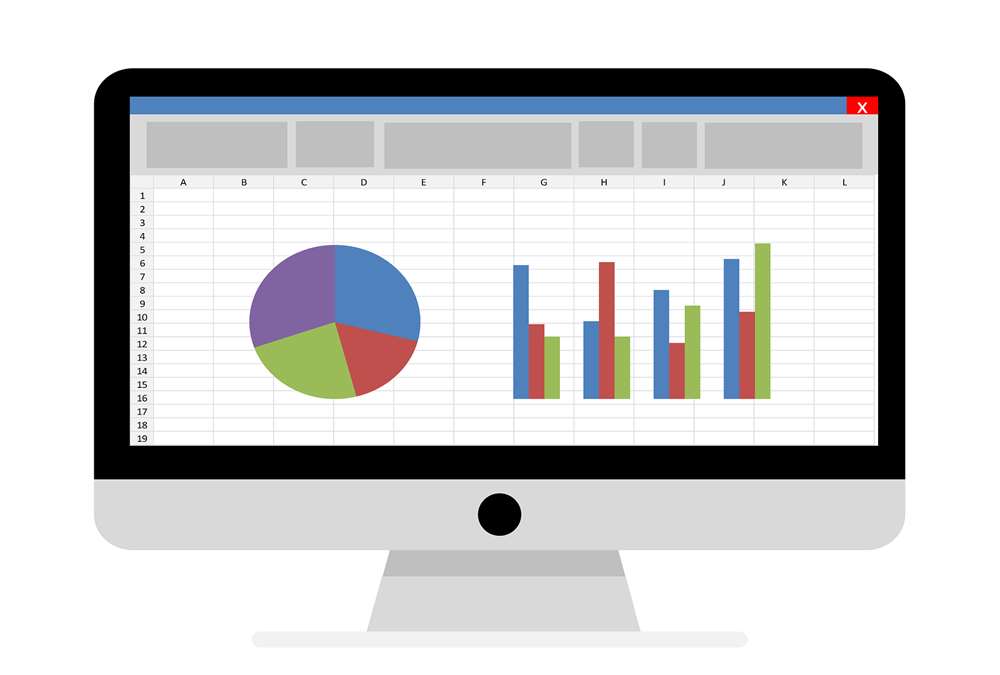- Home
- Business Processes
- Industry Knowledge
- Aerospace Industry
- Automotive Industry
- Banking Domain
- BFSI Industry
- Consumer/ FMCG Industry
- Chemicals Industry
- Engineering & Construction
- Energy Industry
- Education Domain
- Finance Domain
- Hospitality Domain
- Healthcare Industry
- Insurance Domain
- Retail Industry
- Travel and Tourism Domain
- Telecom Industry
- Leadership Skills
- eLearning
- Home
- Domain Knowledge
- General Ledger
- Business Metrics for Management Reporting
Business Metrics for Management Reporting
Business metric is a quantifiable measure of an organization's behavior, activities, and performance used to access the status of the targeted business process. Traditionally many metrics were finance based, inwardly focusing on the performance of the organization. Businesses can use various metrics available to monitor, evaluate, and improve their performance across any of the focus areas like sales, sourcing, IT or operations.
Business metric is a quantifiable measure of an organization's behavior, activities, and performance used to access the status of the targeted business process. Traditionally many metrics were finance based, inwardly focusing on the performance of the organization. Businesses can use various metrics available to monitor, evaluate, and improve their performance across any of the focus areas like sales, sourcing, IT or operations.
When well defined and intelligently applied, business metrics can help a company gauge the current performance of its products, process or services, compare their performance with benchmarks from the industry and measure the impact of process improvement initiatives.
Qualitative & Quantitative Metrics
The business metrics by which we gauge organization’s performance could be both quantitative (such as cost, cycle time, productivity, and error rate) and qualitative (such as alignment with corporate strategy, or level of technology utilization). Using business metrics insights can be gained on operational processes such as finance, IT, procurement and supply chain. Metrics can also be classified as “Key Performance Metrics” collected for management and recommended for the purposes of measuring efficiency & “Operational Metrics” which are collected and monitored by the operational leaders and recommended for purposes of root cause analysis
Benefits of Metrics
The ultimate purpose of metrics and dashboards is to provide multiple more information, but to provide the right information to the right person at the right time using the correct lever and in a cost-effective manner.
Metrics are a way to measure health of business and to track the performance in specific areas from time to time. A wide variety of metrics are available and collectively these metrics can assist in evaluating the current status and performance of employees, business operations, products or the entire company.
Usage of Metrics
Metrics help company management, investors and creditors understand how a company is performing and the areas that need attention. Ratios can also be used to compare between companies in different industries in terms of financial performance and position.
Some people believe you can measure the organization with just one metric, or use a certain set of metrics that just makes them look good. Setting strong objectives and metrics is an essential first step in better measuring performance.
Companies often are uncertain about which metric to use, how to perform measurement and to interpret results.
For a combination of reasons, companies often fail to use metrics to the extent that they could and should. The under-use of process metrics most likely stems from uncertainty about which metrics to use, how to perform measurements, and how to interpret results. Using rigorously defined metrics and careful measurement, and comparing with performance benchmarking database, companies can evaluate and monitor the operational efficiency in terms of cost, quality and speed. Additionally, metrics are helpful to benchmark process performance across Businesses and/or regions and identify areas for improvement.
It's important to recognize that metrics vary both in their relevance to particular businesses and in their usefulness for reliable, efficient measurement. Some metrics may be universally relevant and easily measurable, while others are complex to calculate or vary in relevance depending on the business context, such as customer satisfaction.
In any focus area, it's essential to carefully assess what the potentially applicable metrics are, which of those metrics are most consequential for your particular business, and what will be entailed in accurately measuring and reporting on those metrics.
It's also valuable to know how typical companies in your industry perform by those metrics, and what level of performance is attained by industry leaders.
ERPs and latest computer technology has helped the access to information that can be generated and presented to management and stakeholders.
Examples of Metrics
Financial Metrics
Financial metrics are the key numbers that one can focus on in financial statements. There are three financial statements, the balance sheet, the income statement and the cash flow that we like to look at to find important metrics.
- Working Capital Ratio
Working capital ratio also known as the Current ratio is used to assess the liquidity position of a company. Assessing the health of a company involves understanding its liquidity. Liquidity means how quickly can a business access its cash by turning current assets into cash to pay for short-term obligations. This determines if the company has sufficient balances in current or short-term assets to pay for its short-term debt.
Current assets are cash and other assets like accounts receivable, marketable securities etc. that can be converted to cash within a year.
Formula - Current assets by current liabilities
Let’s take an example. Sharma Logistics Ltd has loans from banks for trucks purchased in the last five years. All of these loans are coming due which is decreasing working capital. At the end of the year, company had Rs.10,00,000 of current assets and Rs.12,50,000 of current liabilities. Here is the ratio
Rs.10,00,000/Rs.12,50,000 = .80
Sharma’s WCR is less than 1 because debt is higher. This makes business riskier especially if Sharma wants to purchase another truck or apply for another loan. Sharma must pay off some of the liabilities to reduce working capital ratio.
So, higher the ratio, the better it is and the ratio of 1 is considered the middle ground where it is not risky but not very good either. A result less than 1 is considered risky and a result more than 1 shows company can pay its current liabilities and still have current assets left.
- Earnings per Share
Earnings per share (EPS) measures net income earned on each share of a company's common stock. Also called as net income per share, this is the amount of money each share of the stockholder’s stock would receive if all profits were distributed.
Formula - This is arrived by dividing net income by the weighted average number of common shares outstanding during the year. Preferred dividends amount is removed from net income since these dividends are not available to common shareholders and EPS only measures funds available from net income for common shareholders. Weighted average of shares is the result of opening and ending count of number of shares divided by two.
Sharma Logistics limited has a net income of Rs10,00,000 and a weighted average of 50,000 shares for the year. Sharma’s EPS is Rs10,00,000/50,000 = Rs20.
- Price-Earnings Ratio
Called P/E for short, this ratio calculates the market value of a stock in relation to earnings. This ratio shows what the market is willing to pay based on the company’s current earnings. Analyst or Investors use this ratio to evaluate fair market value by predicting future earnings per share. . for and helps investors reflects investors' assessments of company’s future earnings.
Formula - Divide the share price of the company's stock by EPS to obtain the P/E ratio.
A company with high P/E ratio means investors anticipate higher growth and a low P/E ratio indicates poor current and future performance.
Sharma Logistics Ltd shares are trading at Rs.100 per share and its earnings per share for the year is Rs.20. Price Earnings ratio is Rs.5 and this means the investors are willing to pay Rs5 for every rupee of earnings.
- Debt-Equity Ratio
The debt-to-equity ratio compares a company’s total debt to total equity and indicates the percentage of company’s funds coming from creditors(debt) or investors(equity).
Formula – Add outstanding long and short-term debt, and divide it by the book value of shareholders' equity.
Sharma Logistics Ltd has Rs20,00,000 of bank overdraft availed and Rs30,00,000 mortgaged. The shareholders have invested Rs1,000,000 as equity. The D/E ratio will be (20,00,000+30,00,000)/1,000,000=.5
A debt to equity ratio of 1 indicates that creditors and shareholders have a equal stake in the assets of the company. A company with a lower ratio indicates that shareholders are funding the business more than what is being sourced from creditors and also shows a higher level of confidence on the business or they have more at stake in the business. A company with higher ratio is considered risky as there is more dependency on debt to fund the business and this requires regular interest payments.
However different benchmarks are used for debt equity ratios with different industries as some industries tend to use more of debt financing and creditors will also be willing to fund.
- Return on Equity
Common shareholders want to know how profitable their capital is in the businesses they invest it in. In other words, this ratio indicates profitability generated for every dollar/rupee invested as equity.
Investors are interested in knowing how efficiently the company is using their invested dollars in generating income. This is also a key consideration for attracting more equity and management can showcase how effective they have been in handling shareholders’ funds in growing the company. Investors are always seeking a higher return on equity and compare with other companies or industries where they can invest or are giving better return on equity.
Formula - Return on equity is calculated by taking the firm's net earnings (after taxes), subtracting preferred dividends, and dividing the result by common equity dollars in the company. Preferred dividends amount is removed from net income since these dividends are not available to common shareholders
Sharma Logistics limited reported net income of Rs10,00,000. Mr Vipul holds 10000 shares or Rs10 each at par available with him. Vipul’s ROE is Rs10,00,000/1,00,000 = 100. This means every Rs10 invested gave a return of Rs100 for Mr. Vipul.
Operational Metrics
Operational Metrics or Process Metrics are an invaluable tool for companies wanting to monitor, evaluate, and improve their operational performance across the enterprise. Some examples are given below:
Metrics to Track Efficiency:
- Transaction costs
The total cost attributable for carrying out a particular transaction. Example transaction cost to process one supplier invoice. Calculated by dividing volume with the total cost of operations.
- Business analysis (e.g., time analyzing vs. collecting data)
Break-up of time spent during a process cycle on collecting data compared to time spent on analyzing data. Used to identify the value-added time.
- Trades/Sales per Employee
A simple metric to calculate the efficiency of the workforce. This is obtained by dividing revenue with the number of employees
Metrics to Track Effectiveness:
- Error Rates
Metrics to capture error rates during any business operation. For example, number of invoices rejected due to invoice errors
- Audit Assessments
Various metrics can be captured related to the audit process to understand the efficiency of any particular function. Number of open audit queries, number of satisfactory audit queries etc.
Developing an effective performance measurement program for any area of business is not a simple task and becomes more challenges as the scale of business grows. However, it is very beneficial and often seen as a differentiator by the management as it enables them to focus on “how well” they do, as opposed to “what” they do.
Related Links
You May Also Like
-
Different Types of Organizational Structures
Modern business organizations run multiple product and service lines, operate globally, leverage large number of registered legal entities, and operate through complex matrix relationships. To stay competitive in the current global business environment, they must often develop highly diverse and complex organizational structures that cross international borders.
-
Five Core General Ledger Accounts
Typically, the accounts of the general ledger are sorted into five categories within a chart of accounts. Double-entry accounting uses five and only five account types to record all the transactions that can possibly be recorded in any accounting system. These five accounts are the basis for any accounting system, whether it is a manual or an automated accounting system. These five categories are assets, liabilities, owner's equity, revenue, and expenses.
-
Prepayments and Prepaid Expenses
Prepayments are the payment of a bill, operating expense, or non-operating expense that settle an account before it becomes due. Learn the concept of prepaid expenses. Understand the accounting treatment for prepaid expenses. Understand the concept by looking at some practical examples and finally learn the adjusting entry for these expenses.
-
In some of the ERP tools, there are more than 12 accounting periods in a financial year. This article discusses the concept of accounting calendar and accounting periods. Learn why different companies have different accounting periods. Understand some of the commonly used periods across different organizations and the definition & use of an adjustment period.
-
An organizational design is the process by which a company defines and manages elements of structure so that an organization can control the activities necessary to achieve its goals. Good organizational structure and design helps improve communication, increase productivity, and inspire innovation. Organizational structure is the formal system of task and activity relationships to clearly define how people coordinate their actions and use resources to achieve organizational goals.
-
Understand what we mean by GAAP to STAT adjustments. This article discusses the different standards that are used for multiple representations of the financial results for global organizations. Understand the meaning of US GAAP, Local GAAP, STAT, IFRS, and STAT. Finally, understand why accounting differences arise and how they are adjusted for different financial representations.
-
Funds contributed by owners in any business are different from all other types of funds. Equity is the residual value of the business enterprise that belongs to the owners or shareholders. The funds contributed by outsiders other than owners that are payable to them in the future. Liabilities are generally classified as Short Term (Current) and Long Term Liabilities. Current liabilities are debts payable within one year.
-
Accrued expenses, sometimes referred to as accrued liabilities, are expenses that have been incurred but have not been recorded in the accounts. Discuss the need to record accrued liabilities and why they require an adjustment entry. Understand the treatment for these entries once the accounting period is closed and learn to differentiate when the commitments become liabilities.
-
GL - Review & Approve Journals
Review and Approval mechanisms ensure that the accounting transaction is reasonable, necessary, and comply with applicable policies. Understand why we need review and approval processes, what are they, and how they are performed in automated general ledger systems. Learn the benefits of having journal approval mechanisms in place.
-
Explore the concept of journal reversals and understand the business scenarios in which users may need to reverse the accounting entries that have been already entered into the system. Understand the common sources of errors resulting in the reversal of entries and learn how to correct them. Discuss the reversal of adjustment entries and the reversal functionalities in ERPs.
Explore Our Free Training Articles or
Sign Up to Start With Our eLearning Courses

About Us
Learning
© 2023 TechnoFunc, All Rights Reserved











